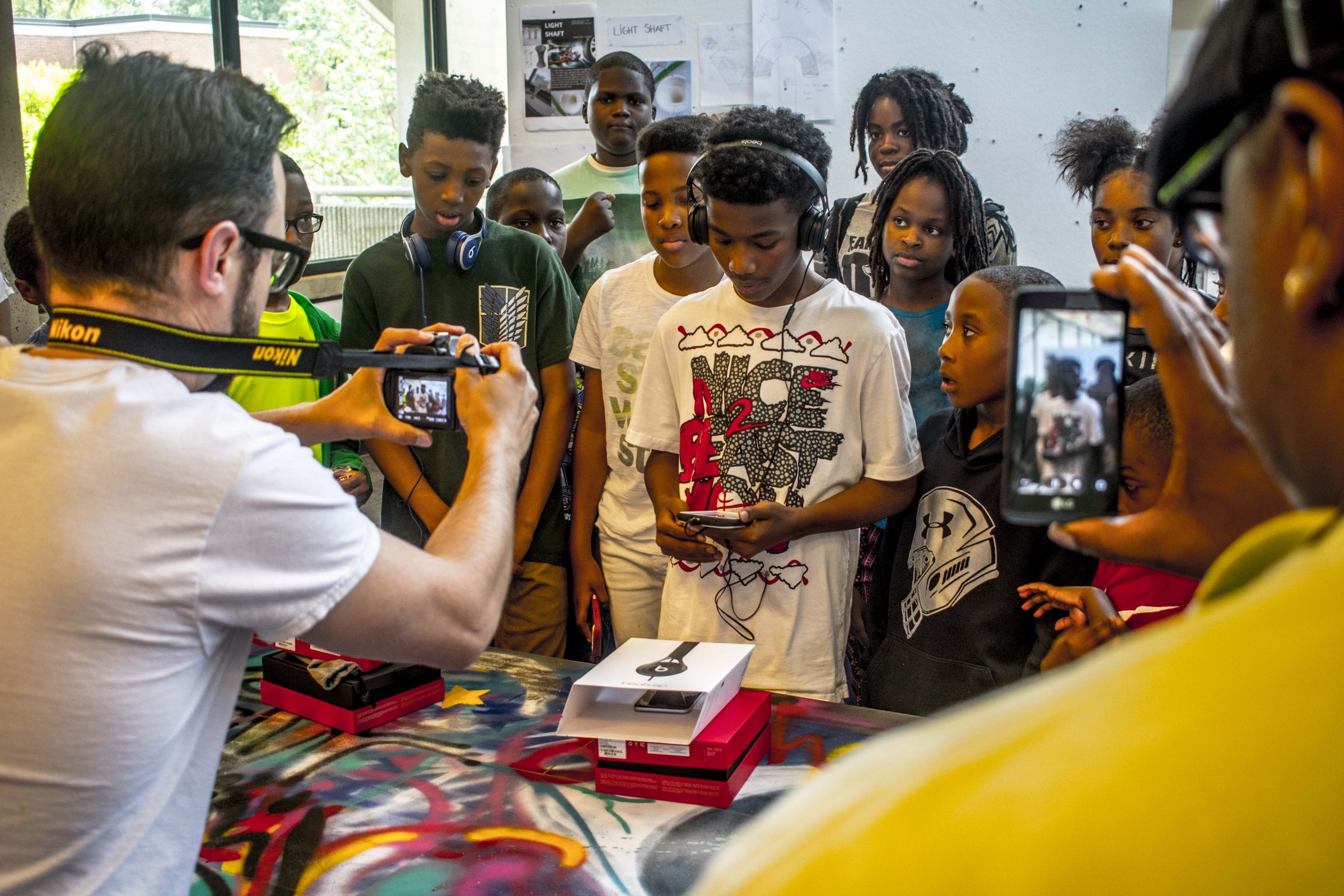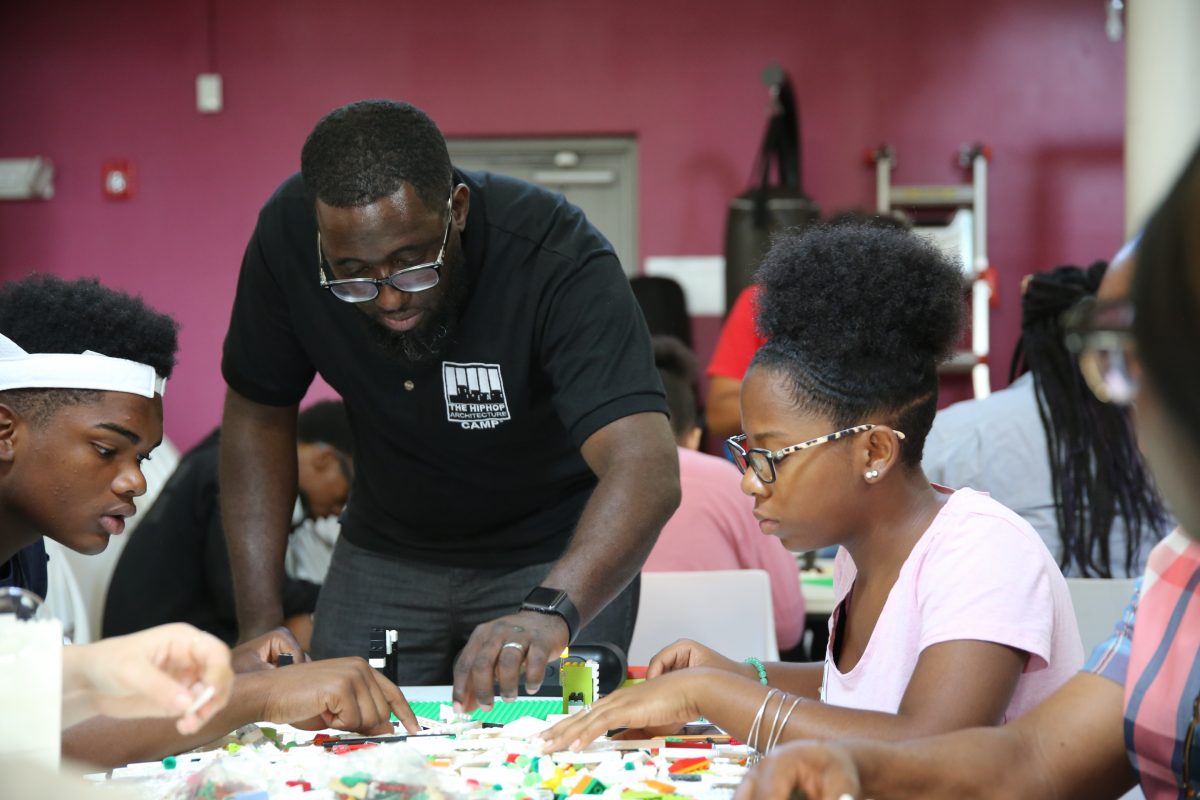The Downtown Memphis Commission (DMC) and Design Marketplace Material Bank have partnered to bring the Hip Hop Architecture Camp to Connect Music on Vance this week.
The Hip Hop Architecture Camp was created in 2016 by Michael Ford, a licensed architect. The week-long camp is designed to “introduce underrepresented youth to architecture, urban planning, creative place-making and economic development through the lens of hip hop culture.”
The camp is based on “four Cs,” which are creativity, collaboration, communication, and critical thinking. According to the DMC, students will work in unison with architects, urban planners, designers, community activists, and hip hop artists throughout the camp to “create unique visions for their communities which include the creation of physical models, digital models, and the creation of a Hip Hop Architecture track and music video summarizing their designs. ”
“Downtown has to be everybody’s neighborhood,” says Brett Roler, the DMC’s senior vice president of planning and development “We’re trying to build a Downtown for everybody. … We try to make decisions through that lens. ‘Are we building a Downtown that is fair and equitable and inclusive and inviting for everyone in Memphis and across Shelby County.”
Roler says that this is a part of the DMC’s commitment to “promoting diversity, equity, and inclusion in our city’s future.
“We know that diversity, it just doesn’t happen by accident. So, what we’re trying to do is take intentional steps to invite people, to encourage people to be proactive in making a Downtown that everyone feels connected to.”
According to Roler, the Hip Hop Architecture Camp is an opportunity for students to gain exposure to architecture by using hip hop music and culture as a catalyst while also showing them the many ways that they can play a role in their community.
“You might say ‘What’s hip hop got to do with architecture?’ and I think that’s a fair question,” Roler said. “However, if kids feel like hip hop and music [are] something that [young people] are comfortable with, something that is accessible to them. There are ideas and principles that apply equally to architecture and hip hop. Whether we’re talking about form, rhythm, structure, it’s all the same. I think Michael has found a way to take something that can be boring, and esoteric, and complicated more accessible and interesting.”
Only 2.8 percent of architects in the United States are minorities, according to the DMC. While a 2022 report from the National Council of Architectural Registration Board states that diversity efforts in the architecture field have improved, the DMC says that minority groups continue to be underrepresented.

“If Downtown is really going to be a place for everyone, then everyone has to help create it,” Roler continues. “People of color are woefully underrepresented in the design field, architecture, urban design, and landscape architecture.
“What I love about Hip Hop Architecture Camp is that it gives us the chance to show kids that they can be a part of creating neighborhoods that you love. You can play a role in building great places and great neighborhoods.”
Roler says that they initially explored other options for camps, such as producing their own. However after seeing the success of the Hip Hop Architecture Camps in other cities as well as the way the experts teach students important concepts in a fun and appealing way, they decided to bring the camp to Memphis.
The DMC is also helping to sponsor an architecture camp hosted by the Memphis chapter of the American Institute of Architects (AIA), which Roler says is geared more so to students who have already solidified that they want to pursue a career in architecture. Roler says that he hopes the Hip Hop Architecture camp will serve as a “feeder” for the AIA camp to continue diversity efforts in architecture, as this camp is for students who may be unfamiliar.
“How do we ensure that the people building Downtown are reflective of our broader community?” Roler asked. “If our broader community is 65 percent African American, I think we need more people of color building Downtown, developing Downtown, opening businesses Downtown, and that’s what we are working on.”
